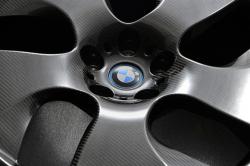 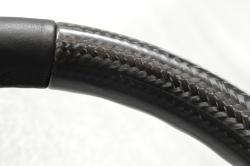 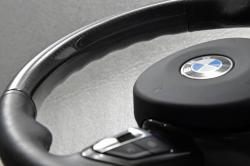 BMW Carbon Fibre Reinforced Plastic. Click image to enlarge |
Article by Lesley Wimbush
MIRAMAS, France – Over the past couple of years, we’ve visited BMW’s Munich headquarters, where we got a first glimpse of the prototype carbon-fibre reinforced plastic (CFRP) body shell that was to become the framework of the electric i3. Since then, we’ve seen their CFRP manufacturing process that has allowed them to mass-produce what is normally an extremely costly material. And now, we’re finally seeing the first of what will eventually be the widespread use of CFRP throughout the BMW lineup – from single-piece drive shafts, rims, and injection-moulded interior components using ground-up CFRP scraps.
Automakers are under relentless pressure to reduce both fuel consumption and emissions ratings. But at the same time, customers expect an increasing level of safety, technology and luxury. This has led to some truly inventive thinking – from the use of lightweight materials to advanced aerodynamics and drive management systems that can consider the route ahead of you and adapt shift and throttle responses accordingly. BMW’s fuel savings program, grouped under the umbrella name of “EfficientDynamics” has been largely credited with pioneering such mainstream technologies as active aerodynamics, start-stop function and recuperative brake energy.
BMW invited us to their Miramas Test Facility in the south of France to have an advance look at some of their latest technology. The creative use of carbon fibre is just part of their strategy to produce lighter, more efficient and environmentally more friendly vehicles. The company also introduced us to a couple of interesting developments in technologies such as Predictive Drivetrain Management, for more efficient and safer control of the vehicle’s powertrain; a modular, parts-sharing engine family and engine thermal management, which helps keep the engines at their optimum performance temperature.
New Engine Family
BMW may be making great strides in their development of electric and hybrid vehicles, but they haven’t overlooked the still-viable conventional combustion engine. Thus, they’ve recently unveiled a family of new engines which have made their first appearance in the Mini, and will make their way into the BMW lineup.
Although they’re available in six, four and three cylinders and in both gasoline and diesel, the engine family follows a “modular approach” and all use BMW’s signature inline setup, with a lot of cross-platform commonality. Each is comprised of optimized 500 cc cylinders: therefore, the three-cylinder engine has a capacity of 1.5 litres, four-cylinder is 2.0 litres, and the six-cylinder is 3.0 litres.
The interchangeable parts-sharing – up to 60 percent between the various engine sizes, but also as much as 40 percent even between gas and diesel power plants – allows greater flexibility in production according to market demand, not to mention reduction in production costs and greater quality control. They also share a common base for engine programming – thus reducing the considerable cost of software programming.
All of the engines feature direct injection and turbocharging, although the diesel’s differing dynamics, common-rail injection and pressures will be managed by tuning. At the heart of this is the TwinPower Turbo and Valvetronic variable valve timing system. TwinPower combines variable load control and the newest fuel injection technology to reduce emissions and consumption across the lineup, regardless of whether the engine is equipped with a single turbo, dual turbos, a twin-scroll or triple turbos. Valvetronic, used in BMW’s engines since 2001, varies the valve lift depending on power requirements without throttle application.
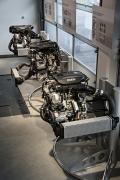 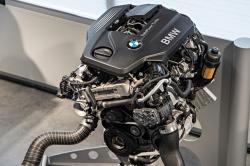 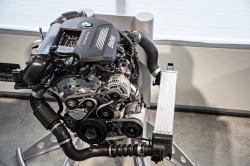 BMW Engine Innovation. Click image to enlarge |
Three-cylinder engines will feature a single balancing shaft rotating at the same speed as the crankshaft, while the four-cylinders have two counter-rotating balancing shafts. The inline six is already balanced and doesn’t require extra shafts. Although most of the family will share the same pistons and connecting rods, high-performance models will have their own specific pistons.
Largely aluminum construction keeps the weight down despite some of the four cylinders being larger than the engines they replace. The new, water-cooled exhaust manifold gently warms the cooling fluid to keep the engine at optimum temperature and helps to reduce friction.











